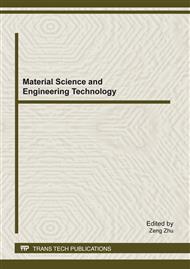p.647
p.652
p.658
p.663
p.669
p.676
p.687
p.693
p.701
Study of the Minimization of Instantaneous Equivalent Fuel Consumption Control Strategy of HEV
Abstract:
A control strategy which based on minimum instantaneous equivalent fuel consumption was proposed in this paper. The important parameters that affected the calculation of instantaneous fuel consumption were analyzed. The important parameters include battery equivalent fuel consumption, penalty function to maintain the battery SOC and the revise of the regenerative braking energy. More precise expression of minimum instantaneous fuel consumption was deduced. Under the simulation platform of ADVISOR software, orthogonal optimization of parameters was performed and the range of important parameters in the optimization of expression was determined.
Info:
Periodical:
Pages:
669-675
Citation:
Online since:
February 2012
Authors:
Price:
Сopyright:
© 2012 Trans Tech Publications Ltd. All Rights Reserved
Share:
Citation:


